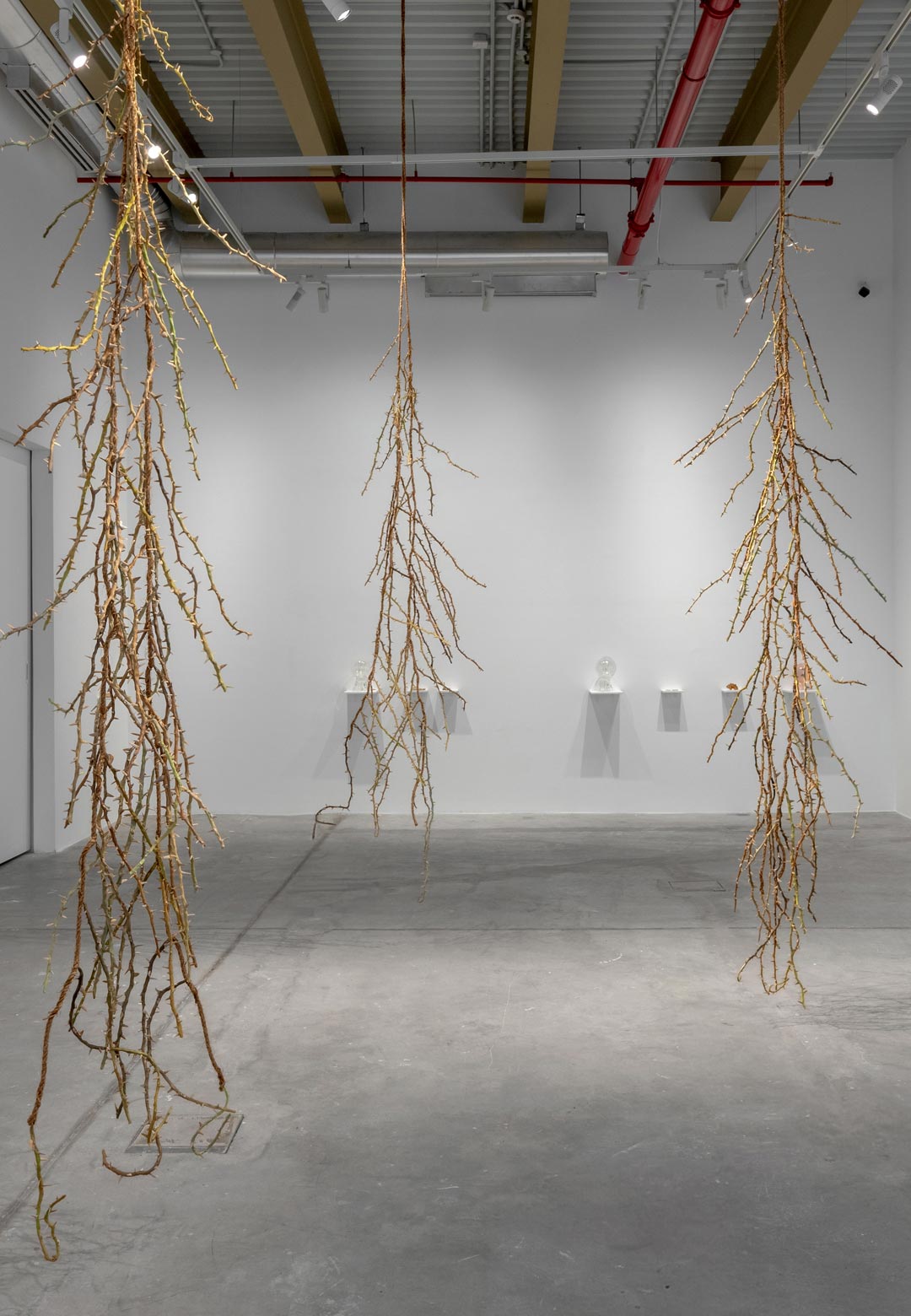London-based artist Nika Neelova, in her latest solo exhibition at the NIKA Project Space, lays bare a setting that decodes geological history, uncovering the ancient marine life that ruled over the present desert lands of Sharjah. Dubbed Begost, the show features a variety of sculptures employing materials such as glass, clay and fossilised shark teeth, all hinting at the transformation and decay that defines the Buhais Geology Park and Jebel Buhais, an archaeological site in Al Madam Plain (Sharjah, UAE).
These new works take the stage in juxtaposition with fossils from archaeologist Nirmal Rajah’s collection. In 2015, Rajah led an expedition to uncover fossils in the Ariyalur district in Tamil Nadu, also contributing to the first English documentary shedding light on India's remains. “This terrain was, in fact, the site of a prehistoric sea that covered most of Arabia until geologically recent times,” shares Neelova, reflecting on her research trip to the UAE. “I imagined the ancient waters buried under the sand dunes, the landscape changing slowly over 93 million years, descending into the blue underworld,” the sculpture artist adds.
On view from May 16 - October 5, 2024, the art exhibition invites visitors to encounter the spirit of water that has long disappeared from the desert of Sharjah region, leaving its fossilised traces behind on the rocks. Delving into these invisible layers of time, the artist engages with materiality and its ever-changing nature—how rocks erode into sand and clay, sand and silica form glass and clay hardens upon contact with air. Mirroring these cycles abundant in nature, Neelova’s sculpture art aims to embrace the constant metamorphosis, recycling and alchemy of matter in geological landscapes. “Among the layers of sedimented time and these prehistoric rocks, the exhibition conjures the oceanic subconscious of the desert, of the sand dunes haunted by the memory of water and their watery ancestors,” the sculptor notes.
Neelova's Medusa Series (2023) is an ensemble of glass medusas’ sculptures created from antique chandelier fragments adhered through hand-blown flame-like glass pieces. The sculptures and their shapes guided by fire are evocative of the primary purpose of chandeliers—providing light. And their phantoms (2023), an inverted tree-like sculpture, subsumes hundreds of decapitated rose stems crafted from fossilised shark teeth dating over 30 million years. The fossils are set into hardened clay to draw parallels between the short life span of flowers and the temporalities of time.
The exhibition space also houses a ripple stone piece called Stones (2023). This piece is created by fingerprints left in beds of petrified clay, a testimony of interaction between humans and nature—reminiscent of a dwindling network of lakes that adorn the planet’s skin. Upstairs in the Dubai-based contemporary art space, skeletal sculptures, Untitled (2021), recalls the Ouroboros, an ancient circular symbol depicting a mythical snake devouring its own tail, emblematic of the eternal cycle of destruction and rebirth. “Reminiscent of the remains of prehistoric creatures, the sinuous flowing sculptures are made from reclaimed handrails from several flights of stairs,” the official release describes.
Decay, irrespective of the negative connotation it carries, can be seen as a process of constant reconstruction of matter in nature. Subsequently, all structures—physical or socio-political—that inhabit the planet are always unravelling and the concept of ‘whole’ is only momentary. This transience that is the very essence of nature and its character guides Neelova’s Beghost, a creative research into immovable geological cycles and time scales—an inflexible destiny of erosion, flux and recycling that refuses to differentiate between the human and the non-human.
‘Beghost’ by Nika Neelova will be on view until October 5, 2024, at the NIKA Project Space, Dubai.






 Sign in with email
Sign in with email










What do you think?